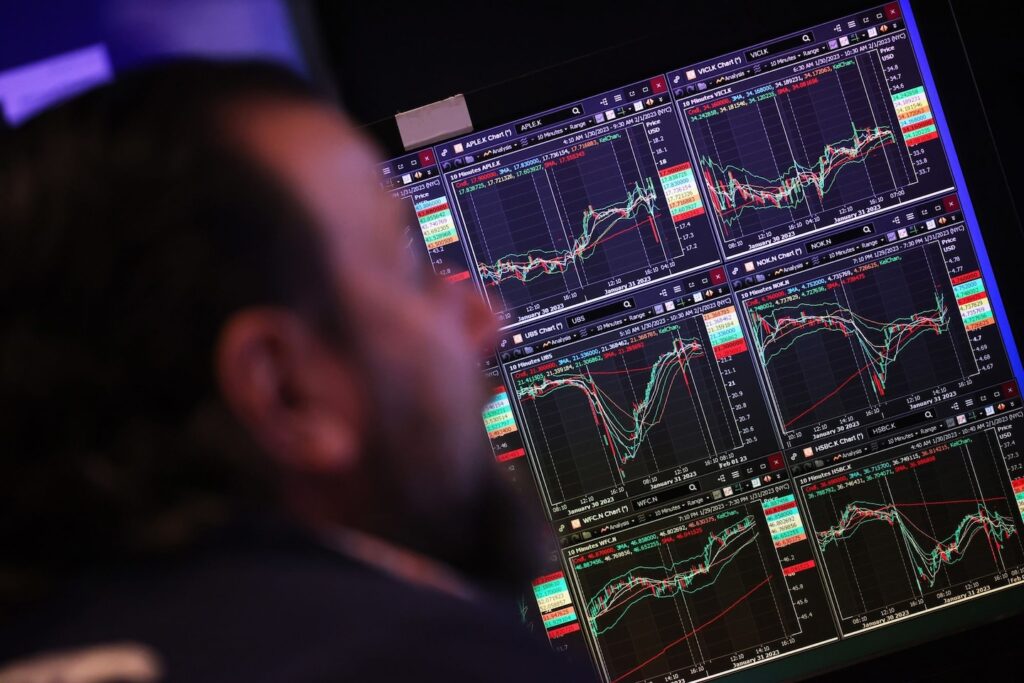
Most of the recent macroeconomic data have been better than consensus forecasts. The resulting mix of declining inflation indicators and less worrisome growth developments has tipped the balance of risks somewhat more toward a soft landing and away from the hard landing characterized by a recession or stagnation.
That is music to the ears of markets because it enables a mutually supportive price rally for stocks and bonds. It is reinforced by the view that, because of such economic developments, the Fed will not have to raise interest rates much higher, if at all, nor will it have to keep the elevated rates unchanged for the remainder of 2023. Indeed, the markets this week increased their expectations for rate cuts later this year, further fueling the rally in stocks and other risk assets.
The resulting moves in markets are eye-popping. Barely a month into the year, the S&P 500 Index is up almost 9%. Internationally, European markets have done even better, with the main indexes up 11% to 14%, as have emerging markets, which have gained roughly 10%.
The typically more volatile assets have also soared, with the technology-heavy Nasdaq Composite Index up more than 16% and Bitcoin gaining more than 44%. Fixed income has not been left out, with strong gains for the riskier and more volatile segments such as high-yield bonds, which are up 5%.
This sharp, rapid and generalized rally confronts the underinvested with a delicate balance: Should they jump into a rally that has already met quite a few analysts’ market forecast for the year as a whole, or should they wait for more attractive entry points?
An important part of the answer depends on their economic and policy views.
Underinvested investors would be inclined to join the roaring rally if they expect economic growth and jobs to hold up and inflation to come down solidly and consistently toward the Fed’s 2% target — that is, extrapolating the favorable data for the last few months. They would also be betting on this macroeconomic configuration to persuade the Fed to pause interest-rate increases either now or after one more hike and then cut in the second half of the year.
In doing so, they would be discarding indicators that would favor the alternative — that of waiting for better entry points. Such indicators include still-worrisome forward-looking economic data, including purchase managers’ indexes and layoff announcements, as well as the Fed’s consistent forward policy guidance. They would also need to think that the central bank will not worry about the loosest overall financial conditions in a year.
It is a delicate balance to say the least. On my side, I feel that the economic outlook may not be as smooth sailing as the markets now expect. For example, and as detailed in earlier columns, I suspect that the downward path of inflation will hit a sticky patch at around 4% later this year and that, notwithstanding job vacancies outpacing the unemployed by 1.9 times, the labor market risks will come under some pressure from widespread layoffs. Remember, the more companies that announce layoffs, the greater the air cover for others to join, including those looking to rebalance the skill distribution of their workers.
What I have less of a feel for is the Fed’s policy reaction function, especially after this week. This has become an even more important issue for the underinvestment question given the extent to which markets have extrapolated policy outcomes well beyond what the Fed has been signaling.
It is not enough for the underinvested to decide on their course of action based just on their economic and policy outlooks. In today’s uncertain world, they also need to consider an aspect of their personal risk preferences that some often overlook: If they end up making a mistake, which one would they be least unhappy having to live with.
The good news for the underinvested is that the portion of their money that is already invested has done extremely well so far this year. Less good is the inherent difficulties they face at these higher valuations in assessing what to do with the cash on the sidelines. Ultimately, the decision will come down to their assessment of the recoverability of a possible mistake, something that even those with common economic and policy outlooks may differ on.
More From Writers at Bloomberg Opinion:
• Talking Softly Without Carrying a Big Enough Hawk: John Authers
• Fed Pivot Is Dead. Long Live the Fed Pirouette: Robert Burgess
• It’s Not Easy Being a Stock Market Villain: Marc Rubinstein
This column does not necessarily reflect the opinion of the editorial board or Bloomberg LP and its owners.
Mohamed A. El-Erian is a Bloomberg Opinion columnist. A former chief executive officer of Pimco, he is president of Queens’ College, Cambridge; chief economic adviser at Allianz SE; and chair of Gramercy Fund Management. He is author of “The Only Game in Town.”
More stories like this are available on bloomberg.com/opinion

